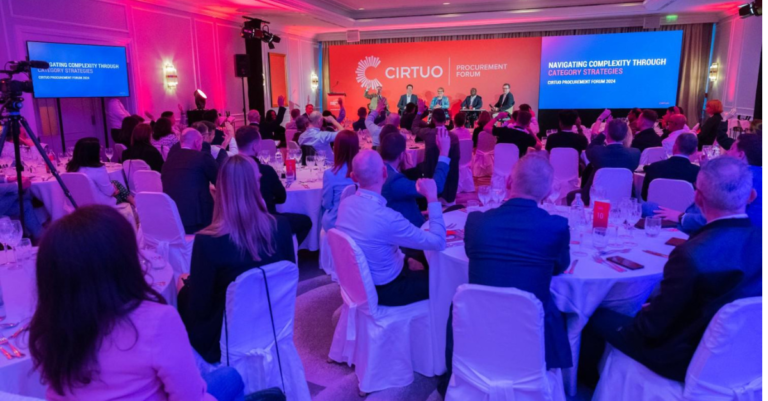People say riding a bike is something you never forget. But what if you learned to ride a bike in such a way that you keep trying to go backwards while braking all the time? That will just look weird and it won’t get you anywhere. And being in a corporation is kind of like riding a huge tandem bike, with all the stakeholders trying to get to the finish line. In that situation, it’s very counterproductive to have half the people going in a different direction. That’s why stakeholder management is important – it’s always better to unite business goals and work towards them together
As I have mentioned many times, the procurement function is in a very interesting period of its evolution. Since Kraljic’s breakthrough in the 80s, procurement departments have had a clear path to a more strategic way of doing things. Some have faced that challenge head-on and some have decided to ignore it as much as they could. But today, that choice no longer exists. It’s evolve or die all the time.
Unfortunately, procurement is lagging behind some other functions, such as sales, a generation or two when it comes to storytelling abilities, and next-level communication skills. Because even if teams are doing everything right with Category/ Supplier Management, if they don’t cooperate and validate their strategies with internal stakeholders, all that work can easily go to waste. And there are
three major reasons why that happens:
Procurement managers in large multinational corporations are often unable to clearly identify all their stakeholders.
When everyone knows each other and they even communicate on a regular basis, those conversations are repeatedly on an operational/ tactical level. Why is the delivery late, when is the next tender, etc? Strategy regularly takes a back seat to firefighting.
Procurement doesn’t systematically involve stakeholders in key supplier meetings and negotiations. No wonder then stakeholders are not interested or not invested in procurement strategic activities.
Does culture eat strategy for breakfast?
This quote is often attributed to famed business management consultant, Peter Drucker. And it’s especially relevant here because no matter how good your strategic thinking is if people don’t care about it, it’s a no-go.
So, what to do then? Just think of a strategy that is aimed at culture. Sounds simple enough, but it is your persistence and dedication that will make it work. This issue exactly is why we have included Stakeholder Mapping in our strategic software, Cirtuo. It’s present in all modules, Category and Supplier Management, as well as in Procurement Transformation. It’s crucial to know your stakeholders, how your strategy affects them, what are their concerns and how you can address those.
As far as impact goes, procurement’s foundation for strategy should be the underlying business requirements. But every category or supplier strategy has a business case that starts off with a pain point and then it turns out to be positive for everyone.
For example, procurement has found an exciting new supplier with innovative packaging of better quality and a lower price. Sounds like a jackpot, doesn’t it? But it’s necessary to upgrade the assembly line in order for the new packaging to fit. If your stakeholders were involved all the way through strategy development and the negotiation process, then they understand that this adjustment is for the greater good of the company. Then the two of you can save the accompany a lot of money and the end customer will be much happier. Win-win, right? But if you kept everyone in the dark, except for an e-mail or two and didn’t build the necessary cooperative bridge, then you’ll probably get resistance all the way. And then it’s lose-lose.
In order to prevent such a situation, it’s great to systematically track what your stakeholders care about. And it’s very easy by using the RAQSCI model. You can read more about it in my previous blog. Some will favor quality, some cost, some innovation, but it’s good to know what you can expect from everyone. Also, it’s very useful to write down whether the person is neutral, whether it has some or a lot of concerns regarding strategy implementation. Some people will probably feel a little weary to write down concerns, but it’s very important to leave emotions out of it. Simply write objectively what you can help your stakeholders with. And in Cirtuo you’ll also get recommended actions that you can take in order to alleviate those concerns.
Stakeholder mapping is a dynamic model and I can’t tell you how many times I have witnessed situations where the procurement team has said to me: The stakeholders are impossible to mobilize. As if we’re talking about a car that wouldn’t start, not people. But in almost all those cases, whenever we analyzed the situations deeper, it turned out that sentence was a broad generalization. When you want to include people in a strategic activity, show them data driven analysis or you want to talk about a category worth hundreds of millions of dollars, people usually listen.
When you include a stage-gate process which continuously validates strategies and implementation with internal clients, that is something that can form a healthy habit for the future. It’s that simple. But in order to include that behavior in your everyday, it’s good to have that data in one place, reminding you to always go a step further. That cooperative step can also have a positive effect on overall job satisfaction because it’s a huge difference whether you view stakeholders as natural partners instead of occasional rivals.
Certain things are the same in business, as they are in life. Would you rather ride a bike with a person who talks about themselves all the time or with someone who cares about what you have to say?
If you want to keep up with industry insights, be sure to follow Cirtuo’s LinkedIn page





